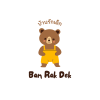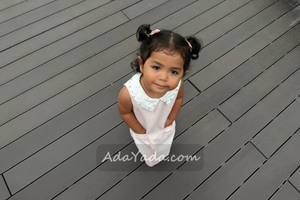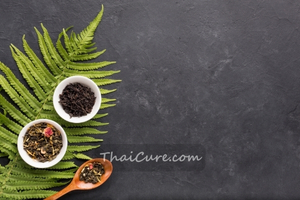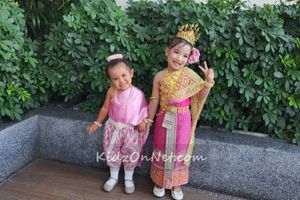- Introduction
- Why Preparation Matters in the First Nursery Year
- Your 10 Must‑Have Items (The Core Checklist)
- 1) Comfortable Clothing & Layers
- 2) Extra Shoes & Indoor Slippers
- 3) Bedding & Nap Essentials
- 4) Healthy Snacks & a Leak‑Proof Drink Bottle
- 5) Toiletries & Hygiene Supplies
- 6) Diapers & Potty Training Gear
- 7) Comfort Toy or Blanket
- 8) Art & Creativity Kit (Approved Items)
- 9) Weather‑Ready Gear (Sun & Rain)
- 10) Spare Bag for Dirty Clothes
- Bonus Packing Tips Parents Swear By
- Personalize Your Toddler’s Nursery Bag
- Mistakes to Avoid (So You Don’t Learn the Hard Way)
- Putting It All Together (Your Weekly Flow)
- Conclusion: You’ve Got This
- ❓ FAQs
Introduction
Starting nursery is a milestone—equal parts exciting and overwhelming. In the first weeks, even seasoned parents wonder: What exactly should I pack? How many backups are enough? Which items do teachers actually use every day? This guide delivers a practical, culturally respectful, and parent‑tested plan so your family can step into day one with confidence. It’s written for busy caregivers who want clarity, not clutter—an easy‑to‑follow plan that keeps mornings smooth, naps cozy, and transitions calm.
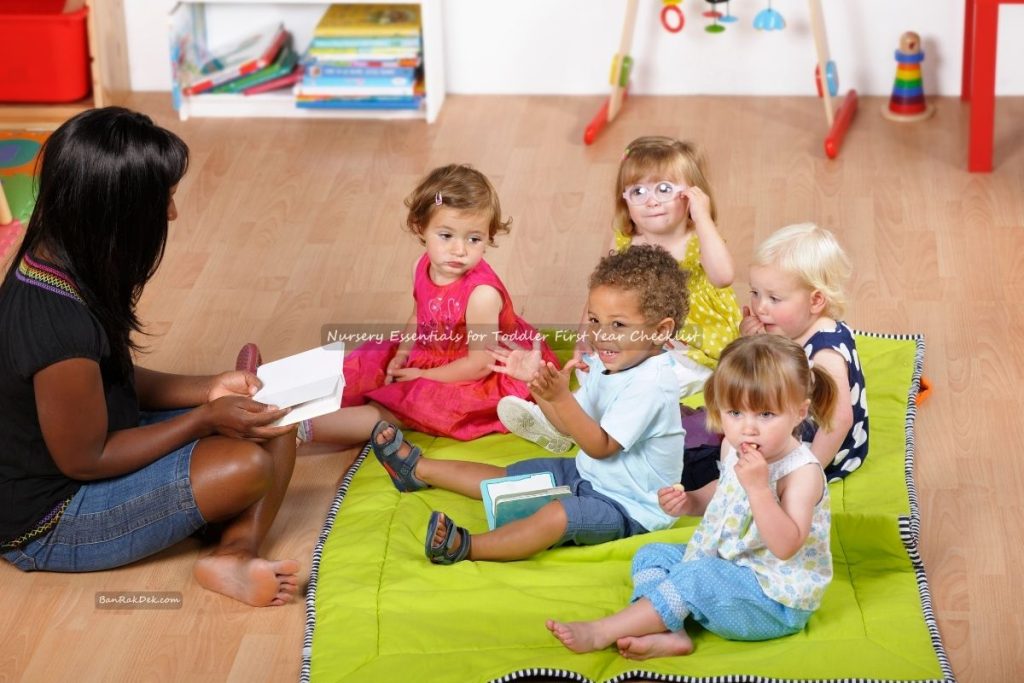
In Thailand and across much of Asia, nurseries often request indoor slippers, labeled containers, and sun‑safe gear. Teachers appreciate a tidy nursery shopping list that avoids duplicates and includes clearly labeled childcare supplies. Throughout this article, you’ll find a straightforward nursery essentials for toddler first year checklist plus reasons why each item matters, how to choose the right option for your child, and where to personalize for your family’s needs.
We’ll walk through 10 core categories—your real‑world toddler nursery must‑haves—with extra tips on labeling, communication with teachers (often via LINE in Thailand), and building a smart rotation system at home. Keep this open while you prepare your bag; you’ll be done before the kettle boils.
👉 “If you’re also preparing a cozy space at home, explore our safe & cozy nursery essentials checklist for furniture, safety, and room design.”*
Why Preparation Matters in the First Nursery Year
The first year at nursery is full of little transitions: new teachers, new routines, and new friends. Preparation makes those transitions feel secure. A well‑packed bag sets your toddler up for comfort in class, smooth nap times, and calmer goodbyes at drop‑off. Teachers can focus on learning and play when each child brings practical daycare essentials instead of bulky extras.
Being prepared also saves time. With a streamlined nursery shopping list, you won’t overpack or forget crucial backups. In hot or humid climates, well‑chosen fabrics, sun protection, and hydration gear reduce discomfort and help prevent midday meltdowns. And because hygiene standards matter, having individual childcare supplies on hand limits sharing and keeps daily routines consistent between home and school.
Above all, a careful plan builds your child’s confidence. When they recognize their own labeled bottle, blanket, or slippers, the space feels like theirs. That sense of ownership makes the classroom safer, friendlier, and more fun.
Your 10 Must‑Have Items (The Core Checklist)
Each item below includes what to bring, how to choose, and quick what to pack for nursery tips. Use this as your living nursery essentials for toddler first year checklist.
1) Comfortable Clothing & Layers
What to bring: Two complete outfits (top, bottom, underwear/socks), a light jacket or cardigan, and a soft hat if your centre has a cool A/C room.
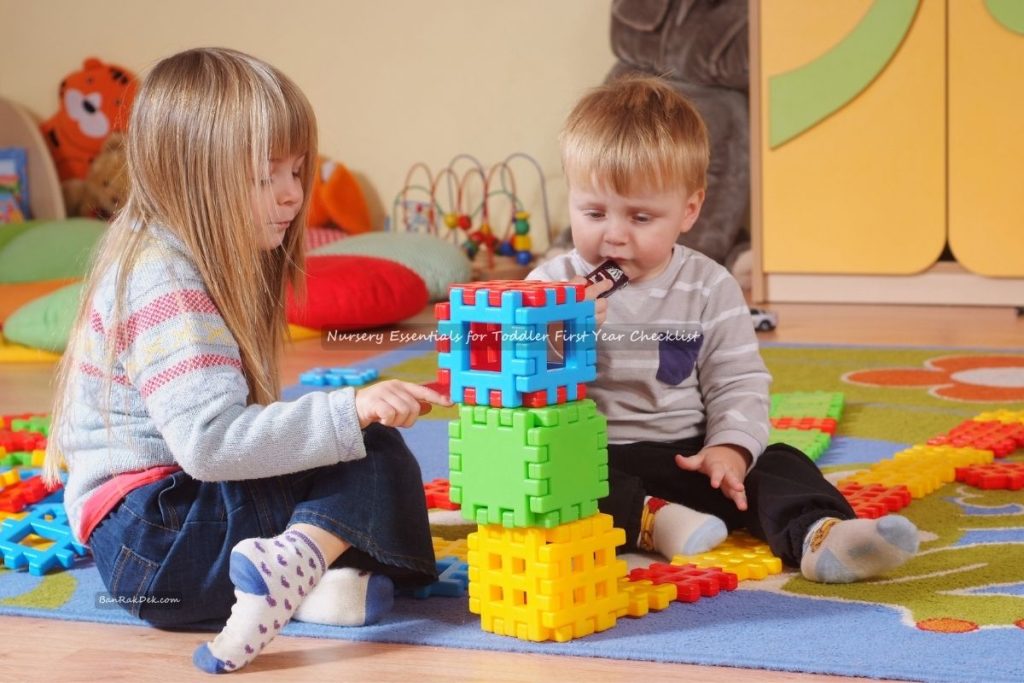
How to choose: Prioritize breathable cotton or bamboo fabrics that dry quickly. Avoid scratchy tags and complicated buttons. Elastic waistbands help with toilet training.
Quick tips: Pack clothes in labeled zip bags by outfit for fast changes. Include one long‑sleeve layer in case rooms run cold. This is one of the absolute toddler daily essentials.
2) Extra Shoes & Indoor Slippers
What to bring: Sturdy outdoor shoes and easy‑on indoor slippers (common in Thai nurseries).
How to choose: Look for non‑slip soles and a secure fit. Velcro or elastic helps teachers support independence.
Quick tips: Label both shoes and slippers—toddlers love matching games when they can “find my name.” This is classic nursery gear that keeps floors clean and safe.
3) Bedding & Nap Essentials
What to bring: Fitted sheet (if required), lightweight blanket, and a small pillow if allowed.
How to choose: Soft, washable, quick‑dry fabrics. If your toddler has a sleep cue—like a muslin square—include it.
Quick tips: Keep nap items in a breathable bag. For comfort, many parents add a familiar scent (washed with home detergent). These nap time essentials make rest smoother.
👉 “Struggling with bedtime routines? Don’t miss our guide on The Importance of Sleep for Kids.”
4) Healthy Snacks & a Leak‑Proof Drink Bottle
What to bring: A labeled water bottle and teacher‑approved, minimally processed snacks. In Thailand, sliced fruit, baby bananas, or rice crackers are popular.
How to choose: Go for spill‑proof lids and a size your child can carry. For snacks, avoid high sugar and sticky packaging.
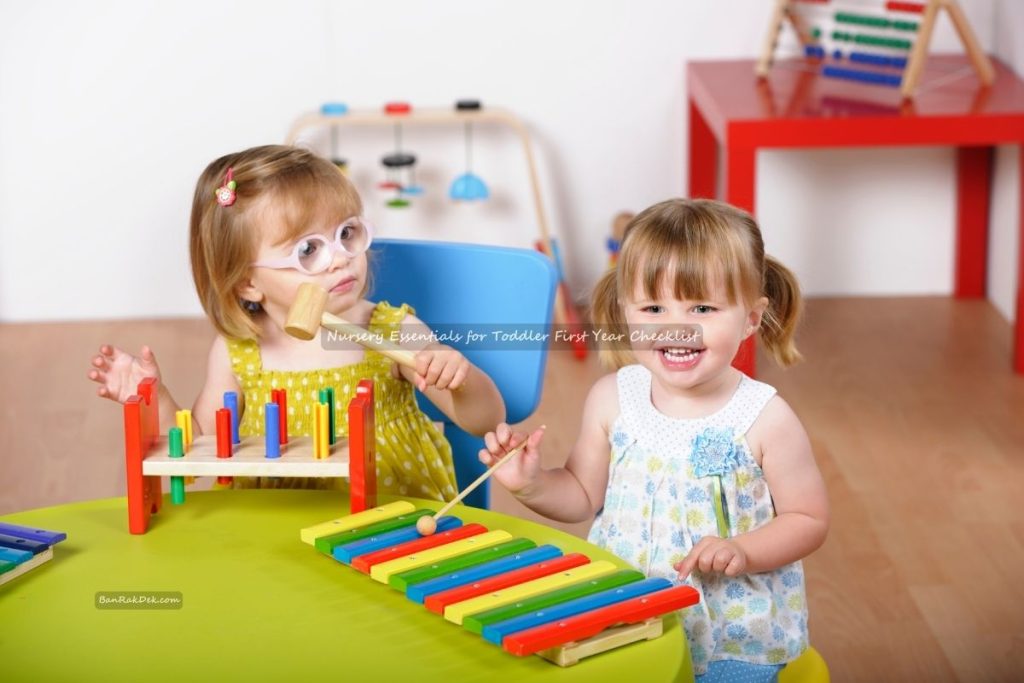
Quick tips: Pre‑portion into small containers. Rotate fruits and textures. Healthy snacks for toddlers support steady energy and better moods.
5) Toiletries & Hygiene Supplies
What to bring: Gentle wipes, a small pack of tissues, a hairbrush, and a spare face towel. If permitted, include toddler‑friendly sunscreen.
How to choose: Unscented, hypoallergenic products reduce irritation. Consider a compact caddy for teachers.
Quick tips: Label bottles clearly. Restock every Friday so Monday starts fresh. Personal childcare supplies streamline classroom hygiene.
6) Diapers & Potty Training Gear
What to bring: Diapers or pull‑ups, barrier cream if needed, and two training pants/underwear sets.
How to choose: For training, pick easy‑on designs and elastic waistbands. Pack a small wet bag for soiled items.
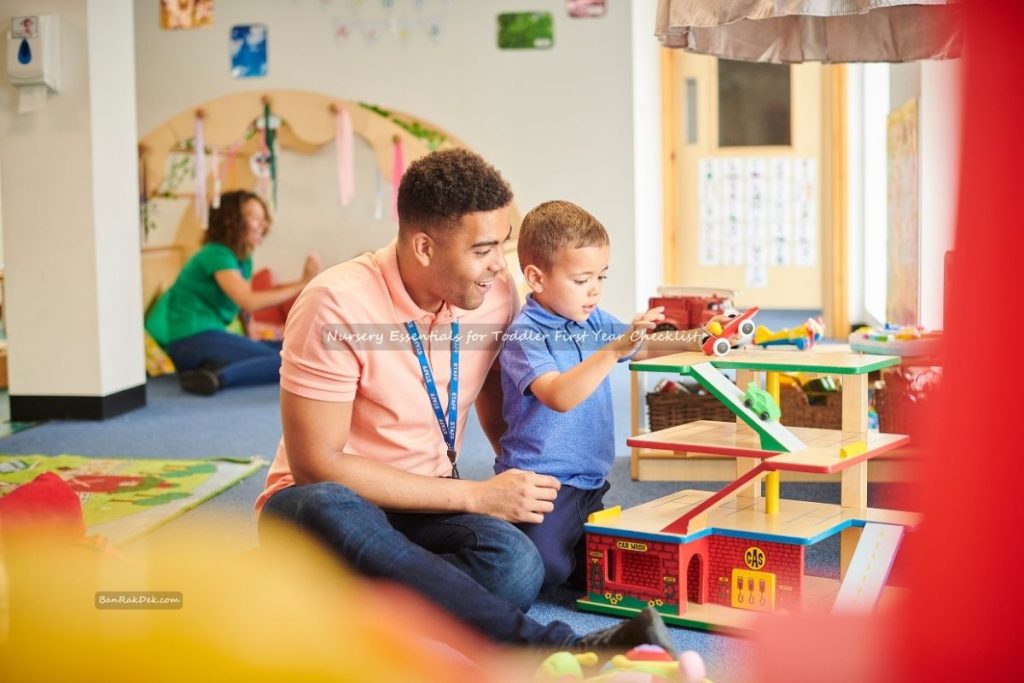
Quick tips: Share your potty routine with teachers (words your child uses, timing, reward system). This is a critical part of first year toddler needs and a top toddler nursery must‑have.
7) Comfort Toy or Blanket
What to bring: One familiar comforter—a small plush toy or blanket.
How to choose: Choose a washable, daycare‑approved size and keep a backup at home.
Quick tips: Introduce a “nursery comfort” routine: cuddle, kiss, bag. Toddler comfort items help with separation and nap transitions.
8) Art & Creativity Kit (Approved Items)
What to bring: A compact case with chunky crayons, triangular pencils, and a glue stick—only if your centre allows personal art supplies.
How to choose: Non‑toxic, washable, and age‑appropriate.
Quick tips: Keep it minimal to avoid clutter. Ask teachers what’s already provided. When permitted, basic art supplies for toddlers foster fine‑motor skills.
9) Weather‑Ready Gear (Sun & Rain)
What to bring: A sunhat, light raincoat, compact umbrella, and toddler‑safe sunscreen if permitted.
How to choose: UPF hats with chin straps, quick‑dry raincoats, and breathable fabrics.
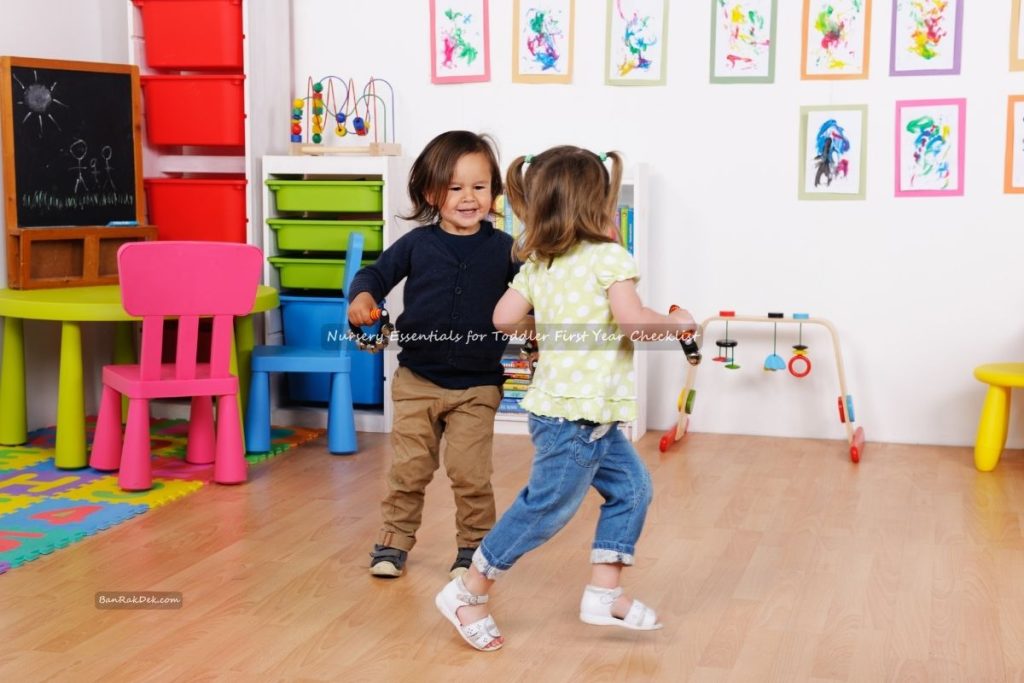
Quick tips: In tropical climates, sun protection and hydration come first. Label everything. These weather‑ready gear choices keep outdoor play easy.
10) Spare Bag for Dirty Clothes
What to bring: A waterproof wet bag or drawstring backpack for laundry.
How to choose: Look for leak‑proof seams and an easy‑clean lining.
Quick tips: Place the wet bag in an outer pocket so teachers can reach it fast. This simple addition completes your nursery bag checklist and keeps the main backpack fresh.
Bonus Packing Tips Parents Swear By
Label everything. Use name tags or a permanent fabric marker on clothes, bottles, and slippers. In bilingual settings, add both English and Thai. Clear labels reduce mix‑ups and support early name recognition.
Sync with your centre. Ask for approved brands or items (e.g., sunscreen rules, comfort toy size). If the nursery provides certain daycare essentials, you can avoid duplicates.
Create a home “packing station.” A shallow bin for each category—clothes, hygiene, snacks—helps you repack in minutes. Keep a weekly restock checklist beside it. This becomes your at‑home nursery shopping list.
Practice independence. Let your toddler open their own lunchbox, zip a pouch, or place shoes on the rack. When they “own” the routine, mornings move faster.
Rotate seasonally. In hotter months, prioritize breathables and extra hydration. During rainy weeks, include a quick‑dry layer and spare socks.
Keep one spare set at nursery. If allowed, store a sealed outfit and small towel in your child’s cubby for unexpected spills or weather changes.
Personalize Your Toddler’s Nursery Bag
Every child has distinct preferences and sensory needs. Personalization makes the bag feel familiar and comforting.
Allergies & sensitivities. If your child has food or skin sensitivities, include a bright card in the front pocket with key info in Thai and English. Share this with teachers and update after checkups.
Routine cards. Tuck a small card with your nap routine, bottle schedule, or toilet words. Consistency between home and school helps toddlers feel secure.
Cultural touches. Families often add a small fabric charm, a colorful name tag, or a sticker from a favorite story. These “home signals” make the day feel connected. Just ensure decorations are safe and nursery‑approved.
Comfort rotation. If your child relies on a specific toy or blanket, rotate two identical versions so one can be washed while the other goes to school. Simple swaps keep toddler daily essentials clean and consistent.
Mistakes to Avoid (So You Don’t Learn the Hard Way)
Overpacking. A heavy bag slows toddlers down and complicates classroom routines. Stick to the essentials and check your list weekly.
Unlabeled items. The fastest way to lose bottles and cardigans is by skipping labels. Mark lids and bases—toddlers love to trade!
Bringing non‑approved items. Ask before sending toys, lotions, or digital devices. Teachers have safety rules for good reasons.
Ignoring weather. Toddlers don’t self‑regulate temperature well. Pack a layer, sunhat, or rain cover depending on the forecast.
Skipping backups. Accidents, spills, and puddles happen. Two spare outfits and a wet bag save the day.
Late Friday restocks. Repack before the weekend rush. A quick refill of childcare supplies—wipes, tissues, and sunscreen if permitted—sets up a calm Monday.
Putting It All Together (Your Weekly Flow)
- Sunday Prep: Refill wipes, stock two outfits, refresh snacks, and rinse the bottle. Check labels on new gear.
- Midweek Mini‑Check: Swap in a new outfit and towel on Wednesday.
- Friday Reset: Empty the wet bag, wash nap items, and restock. Update your at‑home nursery shopping list if something runs low.
This rhythm keeps your nursery gear fresh and reliable without thinking about it every morning.
Conclusion: You’ve Got This
Starting nursery is a family journey. With a clear plan and a calm packing routine, your toddler transitions more smoothly—and so do you. Use this guide as your living nursery essentials for toddler first year checklist: 10 practical categories plus smart habits that make every week easier. As you fine‑tune the bag for your child’s unique needs, keep the core goals simple—comfort, safety, and independence.
If you’re ever unsure, ask your teachers what they’ve seen work best. And when mornings get busy, remember: you don’t need everything, just the right must have nursery items for toddler. A little preparation today gives your child the freedom to learn, play, and thrive tomorrow.
❓ FAQs
Q1. What are the absolute nursery essentials for toddler first year checklist?
A: At minimum: spare clothes, indoor slippers, nap items, snacks, and hygiene supplies.
Q2. How many must have nursery items for toddler should I pack daily?
A: Around 5–6 basics daily, with backups for clothes and hygiene.
Q3. Do I need to buy new nursery gear for my toddler?
A: Not always—reuse home items if safe, labeled, and nursery‑approved.
Q4. What to pack for nursery if my child is potty training?
A: Pull‑ups, training pants, a wet bag, and wipes. Share your routine with teachers.
Q5. How can I simplify my nursery shopping list?
A: Create a home packing station, rotate seasonally, and restock weekly.
